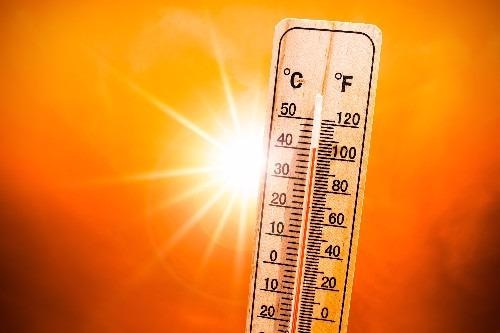A new study has disclosed the majority of fierce heatwaves throughout the world — and surprisingly, some of these went unnoticed.

Image Credit: University of Bristol.
The study, headed by the University of Bristol, also displays heatwaves that are estimated to get hotter in the future as climate change gets more severe.
In the summer of 2021, the western North America heatwave was considered to be the most sever, with an all-time Canadian high of 49.6 °C in Lytton, British Columbia. On June 29th, 2021, an increase of 4.6 °C was noted from the former peak.
The outcomes of the study revealed five other heatwaves across the world which were known to be even more severe but went mostly unnoticed.
The study was recently reported in the Science Advances journal.
The recent heatwave in Canada and the United States shocked the world. Yet we show there have been some even greater extremes in the last few decades. Using climate models, we also find extreme heat events are likely to increase in magnitude over the coming century – at the same rate as the local average temperature.
Dr Vikki Thompson, Study Lead Author and Climate Scientist, Cabot Institute for the Environment, University of Bristol
Heatwaves are considered to be one of the most disastrous extreme weather events. The western North America heatwave was known to be the deadliest weather event ever in Canada, leading to hundreds of fatalities. Also, the related raging wildfires resulted in the comprehensive loss of crops and infrastructure damage.
However, the study, which assessed how extreme heatwaves were compared to the local temperature, displayed the top three hottest-ever in the relevant regions were in Southeast Asia in April 1998, which reached highs of 32.8 °C, Brazil in November 1985, reaching temperatures of up to 36.5 °C, and Southern USA in July 1980, where temperatures increased to 38.4 °C.
The western North America heatwave will be remembered because of its widespread devastation. However, the study exposes several greater meteorological extremes in recent decades, some of which went largely under the radar likely due to their occurrence in more deprived countries.
Dr. Vikki Thompson, Study Lead Author and Climate Scientist, Cabot Institute for the Environment, University of Bristol
Thompson added, “It is important to assess the severity of heatwaves in terms of local temperature variability because both humans and the natural eco-system will adapt to this, so in regions where there is less variation, a smaller absolute extreme may have more harmful effects.”
Furthermore, advanced climate model projections were utilized by the research group to forecast heatwave trends for the rest of this era. The modeling signified levels of heatwave intensity and are set to increase in accordance with rising global temperatures.
Even though the highest local temperatures do not essentially have the most significant impact, they still contribute. Enhancing knowledge of climate extremes and where they have taken place could help prioritize efforts to help manage such issues in the highly vulnerable regions.
Climate change is one of the greatest global health problems of our time, and we have showed that many heatwaves outside of the developed world have gone largely unnoticed.
Dann Mitchell, Study Co-Author and Professor, Climate Sciences, University of Bristol
Mitchell added, “The country-level burden of heat on mortality can be in the thousands of deaths, and countries which experience temperatures outside their normal range are the most susceptible to these shocks.”
In recognition of the risky impacts of climate change and a clear commitment to addressing them, in 2019, the University of Bristol became the first UK university to announce a climate emergency.
Journal Reference:
Thompson, V., et al. (2022) The 2021 western North America heat wave among the most extreme events ever recorded globally. Science Advances. doi.org/10.1126/sciadv.abm6860.